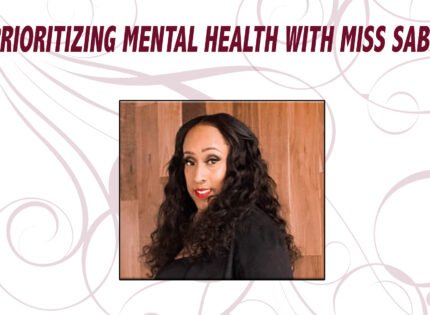
We have begun to grow immune to the shock of school-shooting stories, especially by our gun- fixated neighbours to the south, at least the sort of stories that involve quiet, disconnected loners bursting with anger, and perpetrating their deeds in the hallowed halls of academia.
Once again, this recent rash of violence that is taking place in schools across America has left everyone looking for answers. It is obvious even to the most myopic or profoundly confused that this problem cannot be solved by one group, by passing yet another law, or by bizarre proposals from gun advocates that U.S. schools be turned into maximum-security facilities with armed guards and kindergarten teachers carrying concealed weapons. Which means parents, lawmakers, communities and the schools all need to take action in order to remedy the problem.
Gun control has become a more important issue due to people obtaining guns and bringing them to school.
My generation grew up playing “cowboys and Indians” or “cops and robbers.” If we didn’t have cap pistols or toy guns, we improvised with a pointed finger, a thumb trigger and “pow, pow, you’re dead.”
In elementary school there was never a threat of violence besides the typical fisticuff. We never had to worry about guns or bombs. School was school and very few kids played the fool. Now the current concern of North American society is how to stop guns from getting into the hands of children and then entering schools.
The latest incident to grab the headlines was that of a lone gunman, 14-year-old Jaylen Fryberg, and his Washington State High School rampage. This came packaged with a somewhat unique narrative, presenting the young man as a popular, happy homecoming prince, whose killing of two teens and himself appears to have shocked all those who knew him. “Nobody would have expected it from him,” was the reaction and echoes of his classmates.
However, follow-up reports have indicated that a series of angry tweets leading up to the shooting showed all was not well with the high school freshman, who appears to have had a passion for hunting, family, sports, music, and his Native American culture as a member of the Tulalip tribe. And that emotional social-media trail, according to experts in the field of adolescent psychology, is not at all surprising. Psychologists have said that nobody snaps; it is a myth that people are doing well and then are triggered into committing murder.
There’s always an emotional buildup to it all. In the case of the gunman, even though he looked happy and was voted homecoming king that is meaningless. Popularity is not related to emotional stability, which is why “popularity” is such a problematic term. As far as why a promising young man like Fryberg would go to such extremes over a breakup or a betrayal (both of which have been raised as possible motives in the case), does implore us to look beyond the gun issue.
Strange but true and no cause for any alarm or panic, but the way in which teens are parented, especially today, has some significant impact on their love lives. Some factors that are important to remember regarding adolescents and one that most parents definitely know is that teens are more impulsive, and are more easily emotionally aroused, both negatively and positively. They are also still maturing as far as their capacities and capabilities to manage stress go.
There is a big difference between being popular and having close friends, and the latter is much more important than the former, as it serves as a kind of protective factor. Lots of popular kids are not happy. By the same token, kids with just a couple of close friends who aren’t so popular can be much happier.
However, most teenagers would not react to something like a break-up in this latest manner. In addition, there have been plenty of examples of adults reacting violently to such betrayals. In romantic break-ups, teens do not snap any more than adults do, but stress can often build up to the point where it overtaxes one’s ability to cope with it, and everybody responds in different ways. It is here, at this critical juncture, that I am calling on all parents to do their part.
They have the arsenal of ammunition to counter attacks such as these, especially when it concerns their child. No legislation whatsoever is required or special qualifications for performing this duty. For as long as humans have been coupling off, break-ups have been something we as a society have been dealing with. It is something that each generation deals with, but as always it seems that each generation adds its own unique flavor to the situation and this one was no different.
As a former secondary school teacher, over the years I have noticed that some teenagers become too emotionally attached too quickly and too deeply, and when teens give all of their emotional selves too quickly, it leads to doing so physically. When you add sexual intimacy to an immature dating relationship, things become complicated and almost always end up in earth-shattering heartbreak.
Take nothing away from it, but parenting a teenager is like having a front row seat to life’s greatest drama. This is the age when your teen’s first boyfriend or girlfriend enters the picture, and then exits stage left. This may sound surprising to some parents, but it is important to keep in mind that the heartbreak of a teenager can be huge. It is tantamount to the stock market collapse, as seen through their young eyes.
High school breakups are harder than college. Not only has the romance typically been a first love, as opposed to an elementary school fantasy, but it’s also the first experience ending a relationship. It may further surprise parents to hear that boys often suffer more in the aftermath of a breakup than a girl, especially if they are “dumped.”
Girls tend to have felt the heartbreak of arguing with and possibly losing close girlfriends; they frequently have read stories of love and loss and have a context in which to put this scenario. So how can parents know when their teens’ moodiness is just a signal of normal ups-and-downs, and when it’s cause for real alarm? It is important to pay attention to their non-verbal clues, as well as being involved in their lives. There are a few ways of sleuthing out trouble before it erupts.
As parents we must look for changes in behaviour. Do not look for teenagers to say, “I am mad, I am sad, I am depressed…” Instead, be on the lookout for more nuanced, non-verbal cues such as sleeping more or less than usual, deteriorating grades, social isolation, a rise in irritability, being over dismissive, or general apathy where there has not been such behavior before.
If an atypical pattern of behavior persists for at least a week then intervention should be made and help sought. In the case of boys, parents have to pay particular attention to them, especially after a break-up. Studies have shown that males fall in love more easily and can have a more difficult time falling out of love. There is an abundance of evidence that the break-up of a romantic relationship is the most common precipitator of suicide with an adolescent. On a consolatory note, it should also be stressed that suicide and murder are not the fallout in the vast majority of cases.
Most parents may not think it healthy to discuss breaking up with their teens. In fact, many parents do not consider relationships a topic worth discussing, and most teenagers are of the belief that their parents know nothing. Nevertheless, based on the alarming statistics, clearly a dialogue on this tough topic needs to be started, with a focus on how, as parents, we should be more aware and show that we care and parent differently. In fact, literally assist our teens in navigating the hump when they have been dumped. This may prevent further tragic loss of young lives.
In her well-known song, Tina Turner asked: “What’s love got to do with it?”
The answer is clear: The bullet makes the heart pay when love goes away.
Aleuta—The struggle
continues.














